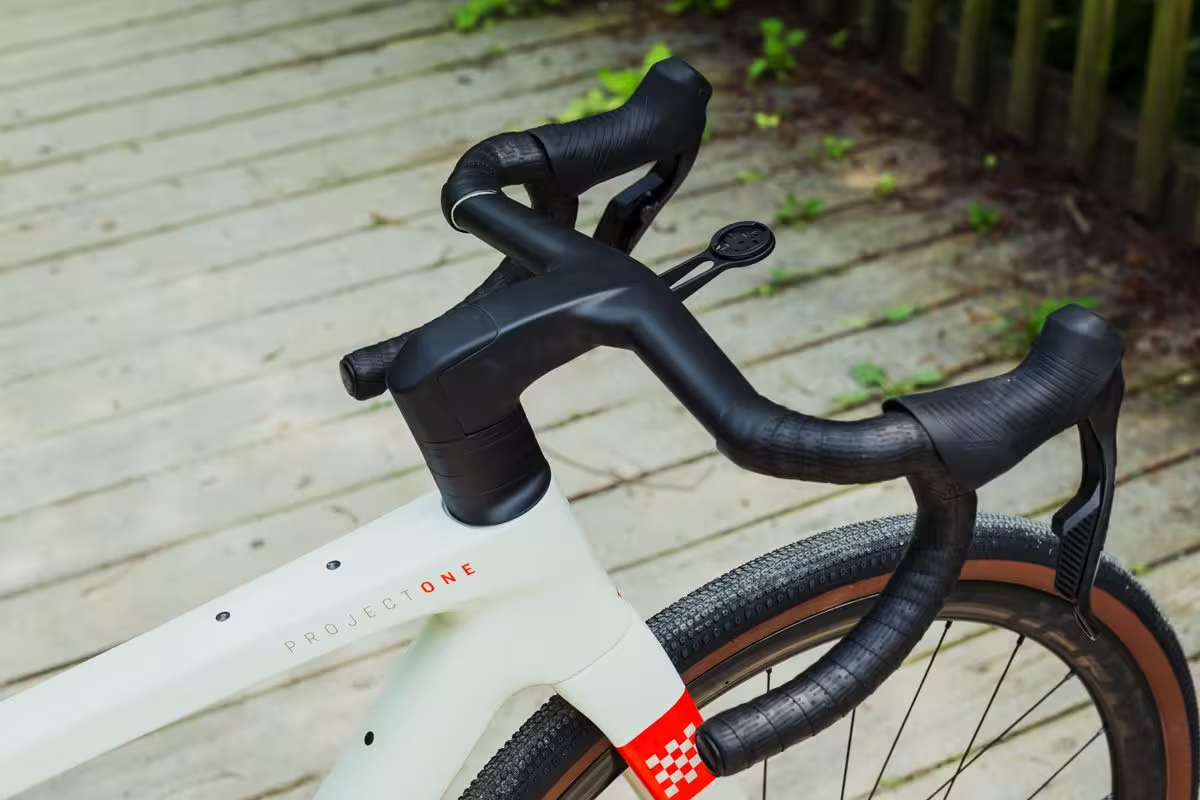With the launch of the new Trek Checkmate SLR, the Waterloo, Wisc., bike company has come out with a new top-end gravel racer. The move means the Checkmate will replace the second-generation Checkpoint SLR as Trek’s light, fast bike for big events like Unbound Gravel.
The release of a new bike marks another significant lineup change by Trek this year. In June, the company cut its lightweight road bike, the Émonda, when it released the Madone Gen 8. The aero bike, which had always carried more grams than the climber’s bike, had become light enough to put the Émonda out of a job, so to speak. On the gravel side, it seems that a bike that shares some of the new Madone’s qualities is worthy of a whole new name.
The Checkpoint, however, does live on. Trek has also launched the third-generation of Checkpoint SL. Both of the new bikes have specific strengths when it comes to the varied discipline of gravel.
The Trek Checkmate SLR frame: Madone-ification of a gravel bike
Trek built the Checkmate SLR frame with its 800 Series OCLV carbon-fibre formula. Before the June launch of the Madone—which is made with 900 Series carbon fibre—the 800 Series was Trek’s highest level of composite. Also remember, the company’s previous top gravel bike, the Checkpoint SLR, used 700 Series. Trek says the new Checkmate is about 450 g lighter than the old Checkpoint SLR.
The new Checkmate frame puts you in a more aggressive riding position. It’s quite road-bike-like. Another feature from the road is the one-piece bar/stem. The Trek Aero RSL Road integrated bar/stem is the same as that of the Madone Gen 8. The tops of the bar are thick enough to make them comfortable to hold. Their shape also conditions the air so that it’s moving well once it encounters your legs. The bar is narrower at the hoods compared with the hooks. There’s a difference of 3 cm. Below, in the section about my first impression of the Checkmate, I discuss how suited this integrated bar/stem setup is to gravel riding.
The Checkmate’s tube shapes also draw from the Madone Gen 8. Both bikes were designed with Trek’s full system foil approach to aerodynamics. Designers and engineers didn’t look at airflow around each section of the bike in isolation, but how air moved around the whole: wheels, sections of the frame and fork, and rider. They saw everything working…
Click Here to Read the Full Original Article at Canadian Cycling Magazine…

